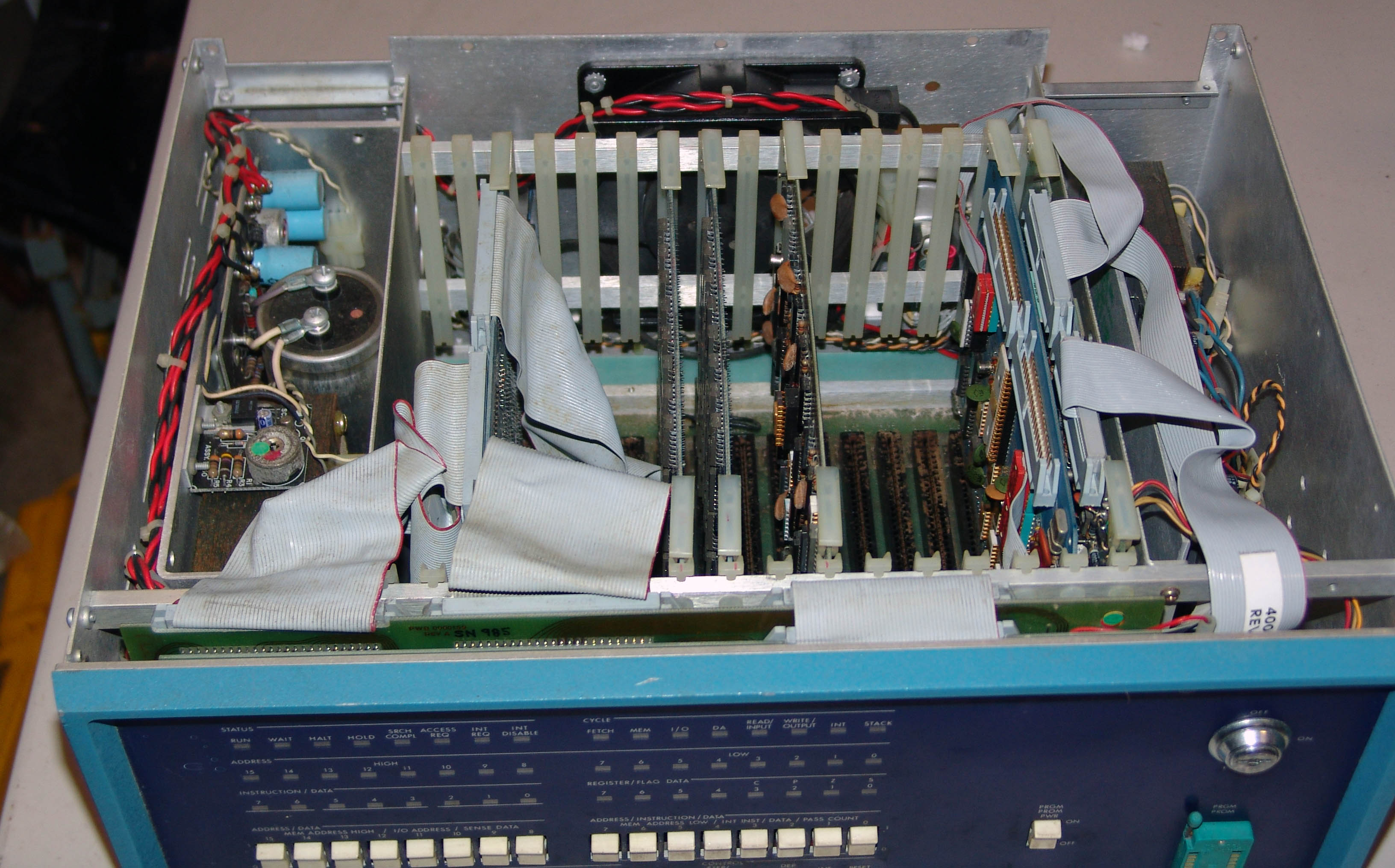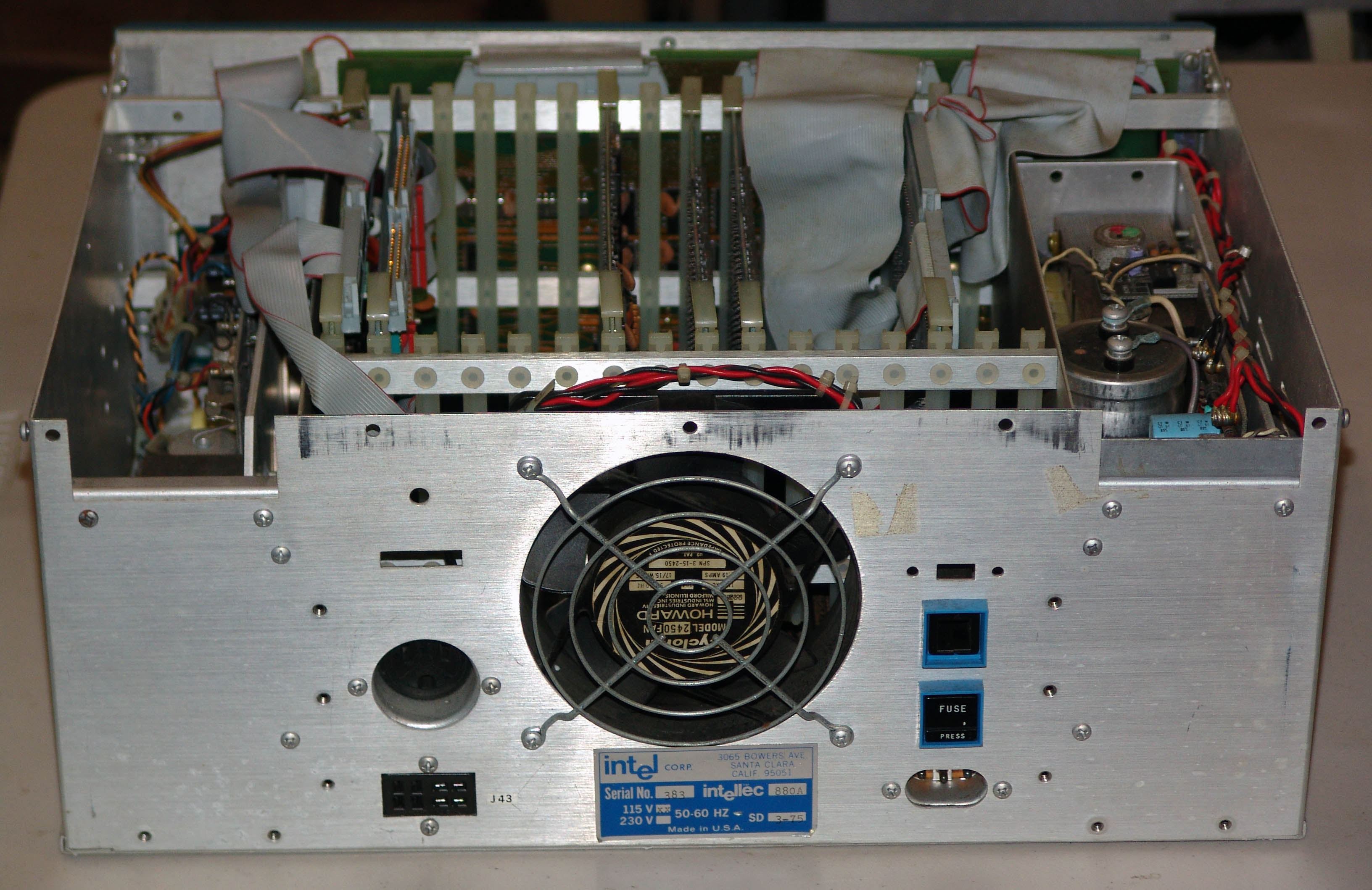Intel MDS on:
[Wikipedia]
[Google]
[Amazon]
The Intellec computers were a series of early

 Intel did not market the Intellec as a general-purpose microcomputer, but rather as a development system. As the first microprocessors were intended to run embedded systems such as in
Intel did not market the Intellec as a general-purpose microcomputer, but rather as a development system. As the first microprocessors were intended to run embedded systems such as in
microcomputer
A microcomputer is a small, relatively inexpensive computer having a central processing unit (CPU) made out of a microprocessor. The computer also includes memory and input/output (I/O) circuitry together mounted on a printed circuit board (PC ...
s Intel produced in the 1970s as a development platform for their processors. The Intellec computers were among the first microcomputers ever sold, predating the Altair 8800
The Altair 8800 is a microcomputer designed in 1974 by MITS and based on the Intel 8080 CPU. Interest grew quickly after it was featured on the cover of the January 1975 issue of Popular Electronics and was sold by mail order through advertiseme ...
by at least two years.
Introduction
The first series of Intellecs included the Intellec 4 for the4004
The Intel 4004 is a 4-bit central processing unit (CPU) released by Intel Corporation in 1971. Sold for US$60, it was the first commercially produced microprocessor, and the first in a long line of Intel CPUs.
The 4004 was the first significa ...
, the Intellec 4 Mod 40 for the 4040, the Intellec 8 for the 8008, and the Intellec 8 Mod 80 for the 8080.
The Intellec 4 and 8 were introduced at the June 1973 National Computer Conference in the New York Coliseum. The Intellec computers were sold not to the general public, only to developers, and a very limited number were built. The Intellec 8 retailed for $2,395.
Features
The Intellecs have resident monitors stored in ROMs. They also included an assembler, linker, and debugger, as well as the ability to act as an in-circuit emulator. Additionally, a PL/M compiler, cross-assembler and simulator were available, which allowed writing programs in a higher-level language than assembly. FORTRAN compilers were also available. The Intellec 8 supported a Teletype operating at 110baud
In telecommunication and electronics, baud (; symbol: Bd) is a common unit of measurement of symbol rate, which is one of the components that determine the speed of communication over a data channel.
It is the unit for symbol rate or modulatio ...
, a high speed punched paper tape
Five- and eight-hole punched paper tape
Paper tape reader on the Harwell computer with a small piece of five-hole tape connected in a circle – creating a physical program loop
Punched tape or perforated paper tape is a form of data storage ...
reader and a CRT
CRT or Crt may refer to:
Science, technology, and mathematics Medicine and biology
* Calreticulin, a protein
*Capillary refill time, for blood to refill capillaries
*Cardiac resynchronization therapy and CRT defibrillator (CRT-D)
* Catheter-re ...
terminal at 1200 baud.
The Intellec 8 is able to address up to 16K of memory and came with 5K pre-installed. The Intellec 4 came with 1K of PROM and 4k of RAM for instruction memory, as well as 320 4-bit words of data memory, expandable to 2560 words. The Intellec 8 ran with a two-phase clock of 800kHz, resulting in an instruction cycle time of 12.5us. The Intellec 4 ran at a slower clock rate of 750kHz, but had a faster instruction cycle time of 10.8us. Both systems were available in "Bare Bones" editions, which omitted the front panel, power supply, and completed chassis; instead, it is designed to mount into a rack. Both systems also weighed .
Usage

 Intel did not market the Intellec as a general-purpose microcomputer, but rather as a development system. As the first microprocessors were intended to run embedded systems such as in
Intel did not market the Intellec as a general-purpose microcomputer, but rather as a development system. As the first microprocessors were intended to run embedded systems such as in calculator
An electronic calculator is typically a portable electronic device used to perform calculations, ranging from basic arithmetic to complex mathematics.
The first solid-state electronic calculator was created in the early 1960s. Pocket-sized ...
s, cash registers, scientific instrumentation, computer terminals, printers, plotter
A plotter is a machine that produces vector graphics drawings. Plotters draw lines on paper using a pen, or in some applications, use a knife to cut a material like vinyl or leather. In the latter case, they are sometimes known as a cutting pl ...
s, industrial robots, synthesizers
A synthesizer (also spelled synthesiser) is an electronic musical instrument that generates audio signals. Synthesizers typically create sounds by generating waveforms through methods including subtractive synthesis, additive synthesis and ...
, game consoles, and so on, the Intellec was used for programming programmable memory chips used by embedded systems, e.g. the 2048- bit (256- byte) Intel 1602A programmable read-only memory
A programmable read-only memory (PROM) is a form of digital memory where the contents can be changed once after manufacture of the device. The data is then permanent and cannot be changed. It is one type of read-only memory (ROM). PROMs are used ...
(PROM) or erasable 1702A EPROM chips which were plugged into a ZIF
ZIF, ZiF or Zif may refer to:
* Zero insertion force, a way to connect an electrical connector without applying force to the connector
* Zero Intermediate Frequency, a radio demodulation technique
* Zeolitic imidazolate frameworks, a class of me ...
socket on the Intellec-8's front panel.Freiberger & Swaine (2000). ''Fire in the Valley: The Making of The Personal Computer (Second Edition)'', McGraw Hill, . The chip-programming socket is the green device in the lower right corner of the Intellec's front panel.
Intel also marketed the Intellec microcomputer development system as a system for developing ''other'' OEM microcomputers.
See also
* Intel System Development Kit * List of early microcomputers * ISIS (operating system)References
Early microcomputers Intel products {{Microcompu-stub